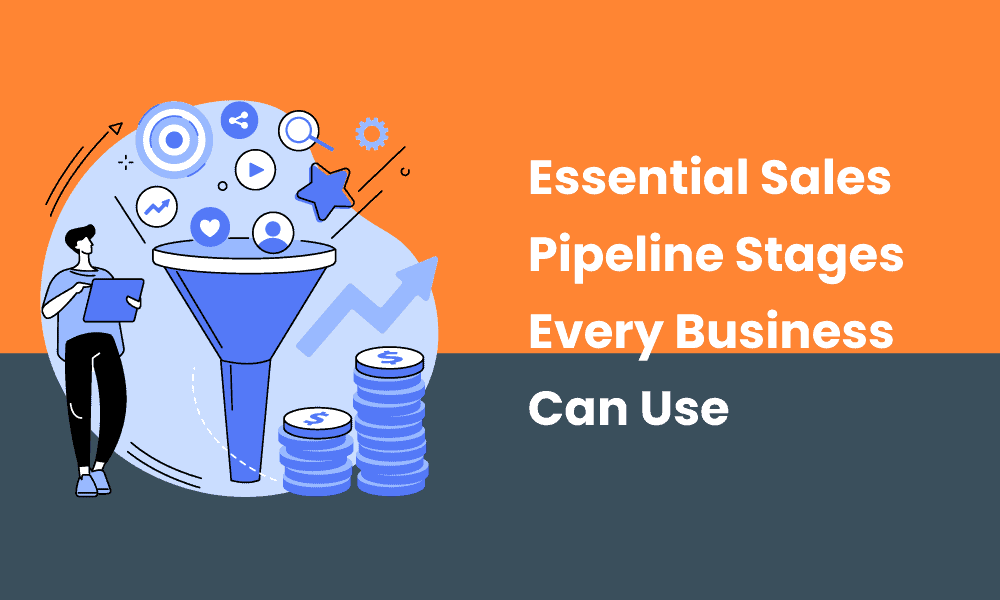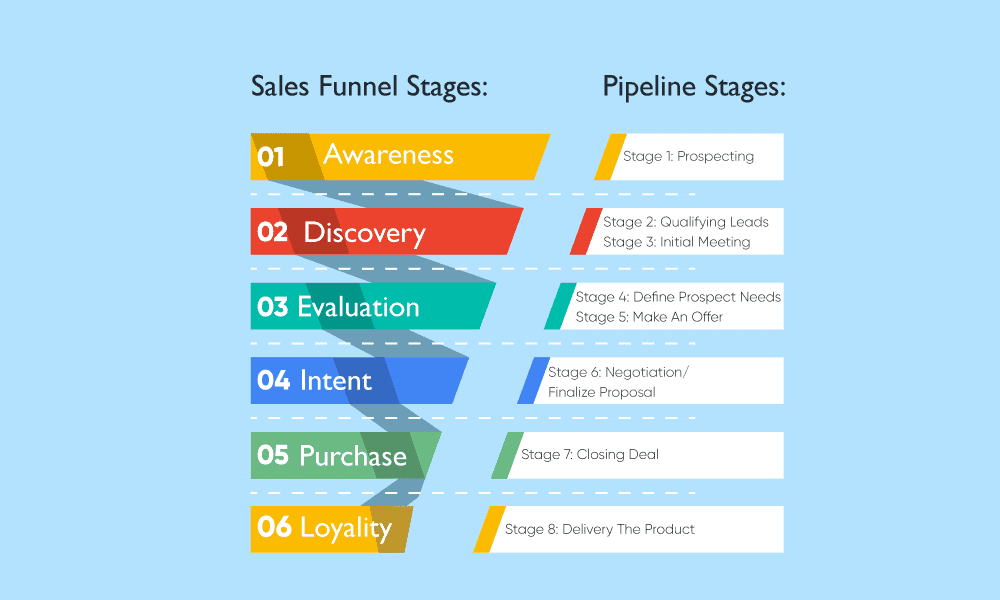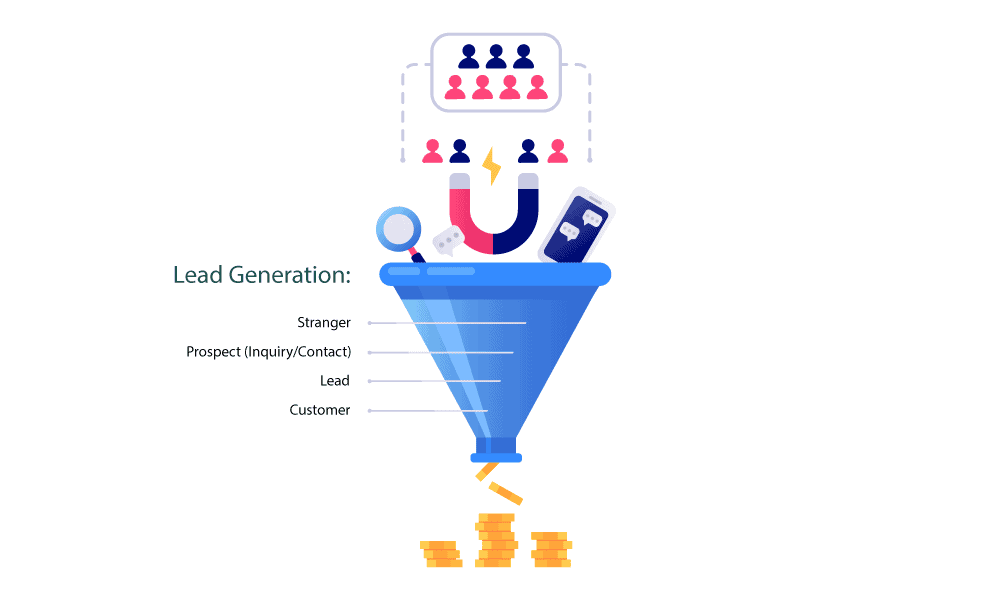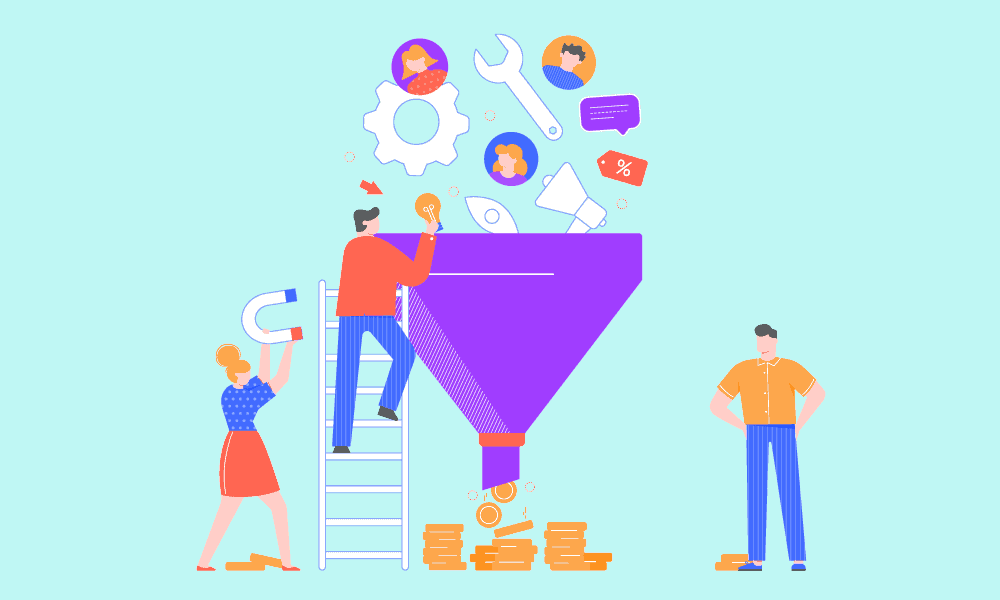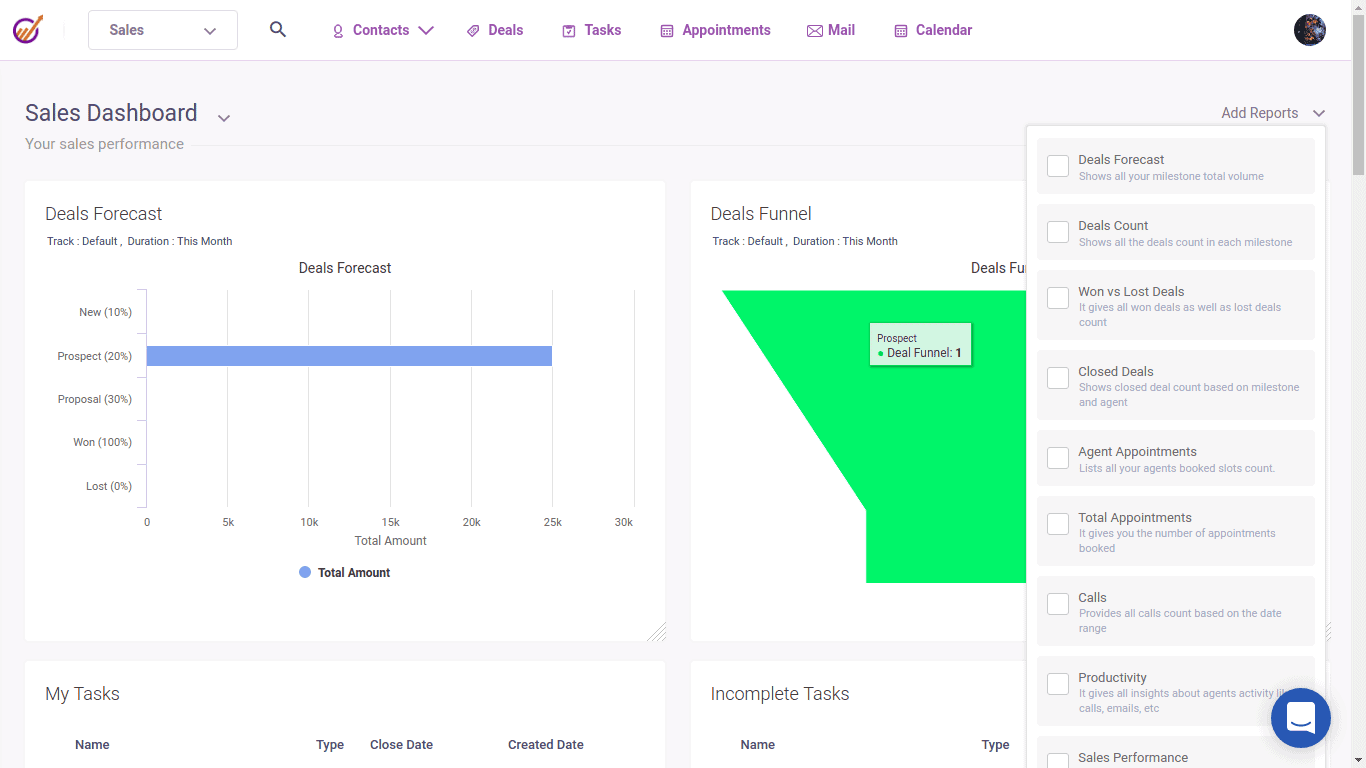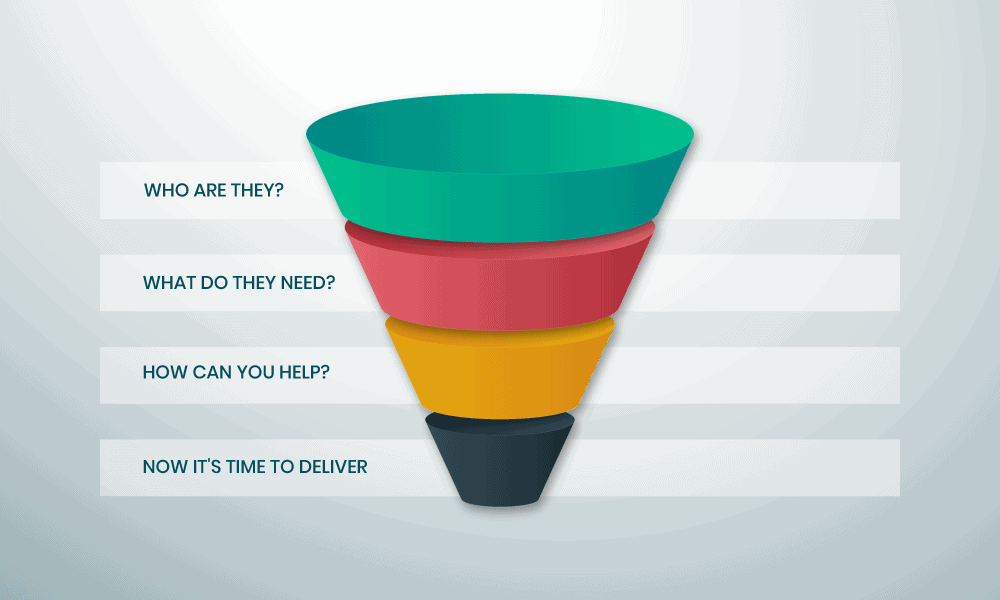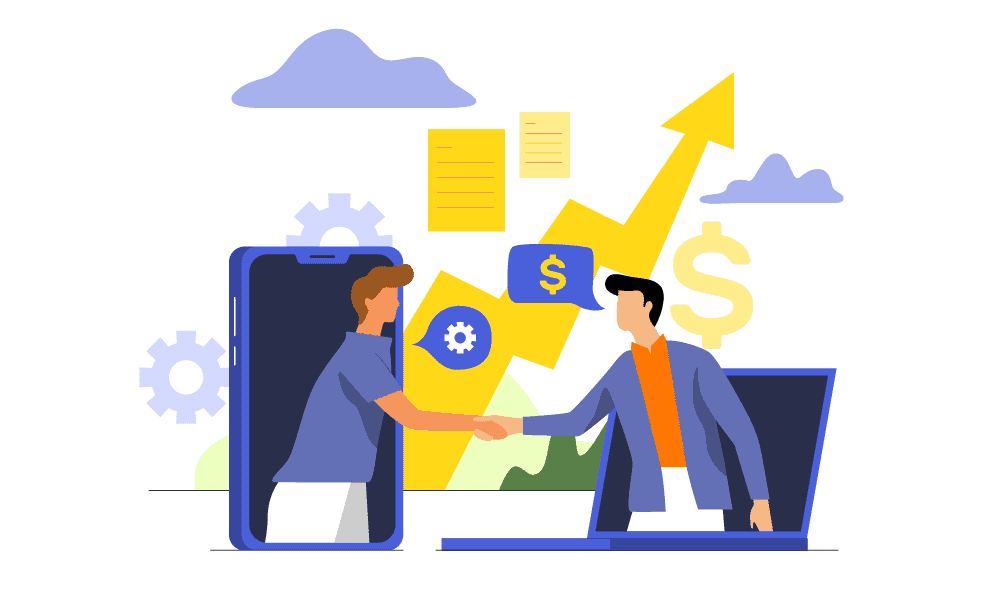As we approach the midway point of the fiscal year, it’s a suitable time to review and potentially enhance the sales pipeline development methodology for your business.
Chances are, you already have a defined sales pipeline in place as part of your sales process, but it’s always worth considering improvements, particularly if you haven’t achieved the desired sales, lead conversions, or revenue growth thus far in 2023.
Identifying the most crucial sales pipeline stages is essential. It’s possible that some of the stages you currently utilize are unnecessary or redundant.
In this article, we have identified seven sales opportunity stages that we believe are vital for achieving sales success.
If you find that you’re missing any of these sales stages or if you’re combining a few, it might be worth contemplating expanding your sales pipeline objectives.
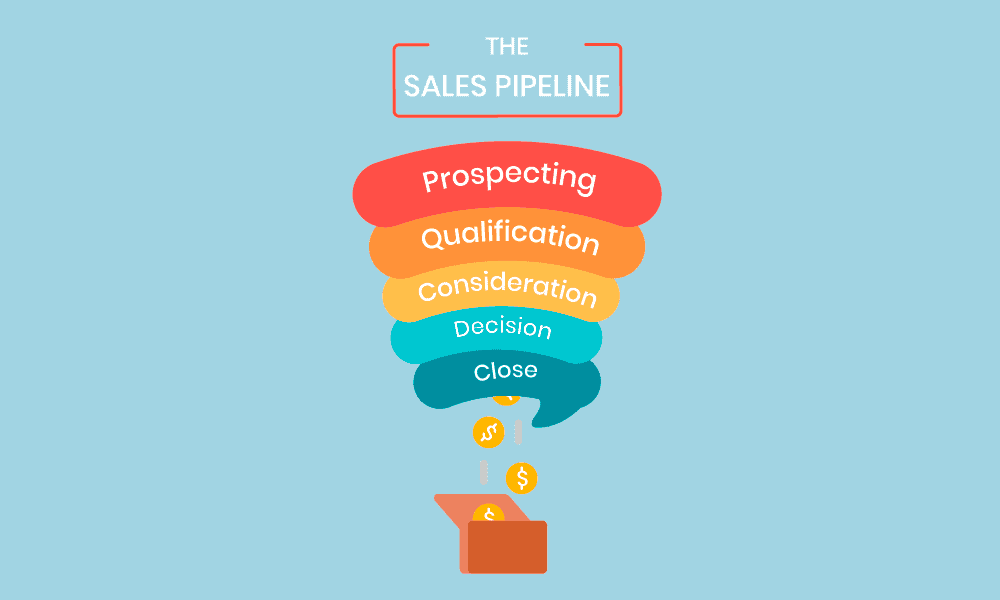
The initial stage is prospecting, which involves actively seeking out leads and assessing their suitability for making a purchase. Once you have identified potential leads, you move on to the next stage: qualifying them.
Qualifying leads involves evaluating their potential through processes like lead scoring. This sales pipeline stage goes hand in hand with prospecting and helps you determine which leads to prioritize.
As you progress to the third stage, consideration, you have already established contact with the lead or prospect. At this point, the decision-making power lies with the lead.
Your primary focus during this sales pipeline stage is to effectively market and sell your product. You may even present a definitive offer to entice the lead.
The decision-making stage, which is the fourth stage, occurs when the lead evaluates your offering and decides whether or not to take advantage of the deal you have presented.
Finally, the last sales pipeline stage is closing the deal. During this stage, you finalize the agreement by drafting contracts, discussing pricing details, and potentially engaging in negotiations, if applicable.
By thoroughly examining and expanding upon these essential sales pipeline stages, you can optimize your sales process and improve your chances of achieving the desired outcomes for your business.
Table of Contents
What’s the Difference Between a Sales Pipeline and a Sales Funnel?
Here’s an image directly contrasting sales funnel and sales pipeline theory.
The main difference between the two? The sales funnel is more about converting leads to customers.
With the sales pipeline, you’re more interested in selling to prospects or customers.
Both play a major role in sales, but they’re not the same thing.
How to Manage a Sales Pipeline
Do you want to manage your sales pipeline for optimal success? Be sure to follow these tips:
- Rely on customer management software or CRM to track new leads or prospects, active sales campaigns closed deals, and more.
- Continuously improve your sales pipeline as more leads enter, you introduce new products/services, and you refine your sales processes.
- Track metrics via analytics and reporting, including sales velocity or a deal’s lifetime, your close ratio, and how many deals are in the pipeline at any one time.
- Cut unresponsive leads or those who don’t fit your criteria.
Read also: Sales Pipeline vs Sales Funnel: Yes, They’re Two Different Things
How to Build a Sales Pipeline: 7 Essential Sales Stages
- The Lead Generation/Prospecting Stage
- The Lead Qualification Stage
- The First Contact Stage
- Prospect Needs Stage
- The Offer Stage
- The Win/Loss Stage
- The Closing Stage
1. The Lead Generation/Prospecting Stage
Whether you call it the prospecting stage, the lead generation stage, or even the new opportunities stage, this is the beginning of your sales pipeline.
During this sales pipeline stage, you’re eager to get new leads or opportunities. Hopefully, you can convert these leads into loyal, buying customers.
These leads enter your sales funnel at the very top. They don’t know a lot, if anything, about your company.
Their level of interest may be low, and they would be extremely reluctant to put down their hard-earned money on your products/services this early.
You don’t know a lot about the stages of a lead, and that’s okay. For the first sales pipeline stage, it’s more about gathering leads than it is learning about them.
That’s for the second stage of your sales pipeline. For now, lead generation is your main goal.
To begin this first sales pipeline stage, you’ll need to use lead generation tactics. There are countless methods you can try, but here are some of our top suggestions:
- Attend trade shows and meet your potential prospects in person
- Create winning content every week or so and then promote it; this is known as content marketing
- Pay for advertisements on websites and social media
- Cold calls or warm calls with leads
- Meet with prospects and network
You want to gather as many leads as possible during this stage. While the leads flowing in can seem overwhelming, don’t let yourself get stressed out.
You will not keep every single lead you have. They will all be filtered and scored in the next sales pipeline stage, and not every single one will make it through.
Other leads will decide they’re not interested and move on. Keeping that steady stream of leads coming can make up for those opportunities that don’t work out.
2. The Lead Qualification Stage
By this point, you should have a healthy stream of leads based on what you did in the first stage of your sales pipeline generation. Now it’s time to do something with the leads, namely qualification.
The second sales pipeline stage is all about determining if you and the lead are a good fit for one another. You want them to blend in with your target audience as closely as possible.
How do you do that?
There are several ways you can go about it.
The first is by creating buyer personas. Each persona has personality traits that differentiate one from another.
Your buyer personas should run the gamut from stay-at-home parents, freelancers, small business owners, to employees of Fortune 500 companies.
This way, you can have a full spectrum of leads at all financial points.
When you make buyer personas, you’re not just worried about how much money the lead makes. That’s good info to have, but it’s not everything.
You also want to know their gender, their location, their job title (if available), their interests, and their pain points.
If you can get other information, such as their goals and challenges or what influences them, that’s great.
However, you probably won’t be privy to this information this early on.
Another option you have during the second stage of your sales pipeline is lead scoring.
This is where you assign a lead a score based on certain criteria you choose. The criteria will vary from company to company and should be values you deem most necessary in a good lead.
Some criteria you might use include:
- Email activity
- Engagement
- Interaction frequency
- Download frequency
- Pages clicked
- Events they went to
- Location
- Job type
- Income
You give the lead either a positive or negative score based on how well they do on the criteria of your choosing.
If they open emails quickly, you might add five points. If they unsubscribe from your email newsletter, you could deduct five points.
The points should be tiered. For instance, if a lead attends an event, that shows a reasonable level of interest in your company. That should count for more than it does a lead opening an email.
Once you’re done scoring your leads, you hold onto the ones who score the highest and set aside the ones who score lowest. Maybe you work with them later or just disregard them entirely.
Read also: eCommerce Sales Funnels 101: A Comprehensive Guide for Beginners
3. The First Contact Stage
Now that you’ve qualified your leads, you know which ones are worth reaching out to. Through your calculated research, these leads are more likely to open your emails, click links, and even respond.
They may also be more receptive to offers.
Email is one of many ways you can contact these qualified leads. You can also pick up the phone and call them. If you’ve had no prior interaction with the lead, then a call of this nature is a cold call.
If you’ve briefly emailed with the lead and then call them, this is a warm call.
You can also host an event, as we mentioned before. Likewise, you can invite the lead for an in-person consultation at your sales office.
This is an important first meeting, and the way you prepare for it matters a lot.
Before you have the meeting with the lead, you want to be sure of what the point of it is. What are your goals with this meeting? Are you trying to inform them more about your company’s products/services? Do you want to make the sale right then and there?
Depending on what your goal is, your tactics during the meeting will differ.
No matter what your short-term goal is, you should always be moving the prospect along through the sales funnel.
Deals are crucial to the sales process. EngageBay’s Deals feature offers you powerful tools to convert every opportunity.
They’ve started at the top (most leads, anyway), but now you want to move them towards the bottom. If you’re not making progress with this call or meeting, then you’re wasting both your time and the prospect’s time.
That’s why it’s a good idea to plan ahead as much as possible. Keep all the information about the prospect in front of you.
Write down questions and topics to discuss.
These can also act as a reference point for getting the conversation back on track if it veers too far off-course.
Read also: eCommerce Email Conversion Funnel Analysis Guide For Beginners
4. Prospect Needs Stage
Through your lead scoring and initial meeting, you’ve learned a ton about your prospect. This benefits you for the next stage of your sales pipeline, which is identifying the needs of your prospects.
If you created a buyer persona for your leads, then you should have a decent idea of what your prospect’s needs could be.
Now you want to fill in any missing info. This way, when you progress to the next stage, which is making your offer, you have a higher chance of the prospect saying yes.
If you don’t yet know all the pain points and needs of your prospect, you’ll have to spend some time obtaining them.
This may mean back-and-forth emails and phone calls. In addition, you could email them surveys or do a comprehensive needs assessment.
You could even introduce the prospect to some of your stakeholders.
Sales CRM software can be a big help here in tracking all the needs and pain points of your respective prospects. Once you do finally have the information, it’s time for your sales team to do a self-assessment.
Do your products and services align with the needs and pain points of most of your prospects?
If your product can solve a particular problem or your services can make someone’s life easier, then the answer is yes.
However, you have to be honest with yourself during this time. Your products/services will not be a fit for everyone.
Whether because they don’t have the same needs or because they went to the competition, not everyone will want what you’re selling.
If some prospects just aren’t a fit, you have to let them go for now.
You can always come back to them later, but it doesn’t do either of you any good to progress the business relationship any further than this point.
5. The Offer Stage
That’s because, as we mentioned, the fifth stage of your sales pipeline is the offer stage.
By this point, you’ve done all the necessary homework on your prospect. You’ve given them a buyer persona, scored them, and interacted with them.
You’ve created a certain level of engagement between the two of you. Through all this communication, you’ve also learned of their pain points and needs.
Finally, you’ve assessed whether your products or services are the right fit for the lead.
Now, you can finally make your offer. Not every prospect should receive the same offer. For some prospects, you might try a freemium offer.
This is like a free trial but there is a level of commitment. The user would have to put money towards an upgrade of the product or service.
You could also offer a free trial. This is free for the duration of use, but that duration is often limited. You could give prospects a week or even a month to use the product.
Then, if they want to use it further, they’d have to buy it.
No matter which kind of offer most aligns with your prospects’ needs, this is the stage where your selling skills get to shine.
You must acknowledge that you understand the needs and problems of your prospects. Then, you have to position your product or service as the solution to those problems.
You also must cover the benefits of your product, as well as the conditions, terms, and pricing. Yes, this is the case even if the prospect isn’t using the paid version of your product or service.
An accurate picture of the deals funnel helps increase conversions.
6. The Win/Loss Stage
One of two things will happen when you make your offer to the prospect. They will either say yes or they’ll say no, they’re not interested.
This is known as the win/loss stage.
This is a rather self-explanatory stage, but we figured we’d still briefly discuss it.
If the prospect said yes, then congrats! You can move on to stage seven, the final stage in the sales pipeline. If they said no, then this is the last stage, at least for now.
While you can always try to change the mind of a prospect, being forceful or pushy will never garner you repeat business.
For now, as hard as it is, you have to accept the prospect’s decision. With time, you can reach out to them again and see if their needs have changed. For now, though, count this for what it is: a loss.
Don’t dwell on the sales loss for too long. It’s unfortunate to lose a prospect, especially after putting in all that hard work, but it happens.
Luckily for you, you have tons of new prospects coming in through the sales pipeline. You want to focus your attention on them, starting from stage one and working your way down through the sales funnel.
7. The Closing Stage
If the prospect said yes, they want to try your product/service, then you move into the finalizing or closing stage.
This is where terms may be negotiated and formal contracts are often drawn up.
Just because you’ve pretty much hooked in the prospect doesn’t mean they can’t wriggle free. If they have questions or concerns, you want to do your best to answer and address these right away.
You’re trying to dissipate any lingering doubts on the part of the prospect so they feel confident striking a deal with you.
Next, you can cover the terms of your deal, then present a contract for them to sign (this can be done digitally too if need be).
The prospect will then pay for your service and begin using it. You can also refer to them as a customer at this phase.
The worst thing you can do is make it a hassle to fill out contracts or make a payment. You want this to be as quick and simple as possible so the customer is willing to complete these important tasks.
From there, you want to give them access to the product/service, send a welcome email (that thanks them for trying the product/service), and then sit back and let them enjoy.
Be around to answer questions if they arise and be sure to send a follow-up after the free trial expires. You’d also want to reach out if the customer decides they want to pay for their freemium service.
Read also: eCommerce Conversion Funnel in 5 Stages
Conclusion
By recognizing and implementing these seven sales pipeline stages, you gain valuable insights into the areas where your current pipeline may be falling short.
This awareness allows you to strategically address any gaps or weaknesses in your sales process.
With a comprehensive understanding of each sales pipeline stage, you can provide your sales team with the necessary tools and guidance to excel in their roles.
By optimizing your pipeline and refining your approach, your team can operate at its highest potential, effectively bringing in sales and successfully converting prospects into loyal customers.
Remember, a well-structured and efficient sales pipeline is instrumental in driving business growth and achieving sales targets.
By continuously evaluating and refining your pipeline based on these key stages, you position your team for success and increase the likelihood of achieving your desired sales outcomes.
Embrace these sales pipeline stages as a roadmap for your sales endeavors, and empower your team to leverage them as a foundation for their day-to-day activities.
With dedication, perseverance, and a strategic focus on enhancing your sales pipeline, you set yourself on a path towards improved sales performance and business success.
Wishing you the best of luck as you implement these sales pipeline stages and propel your sales team towards greater achievements!
